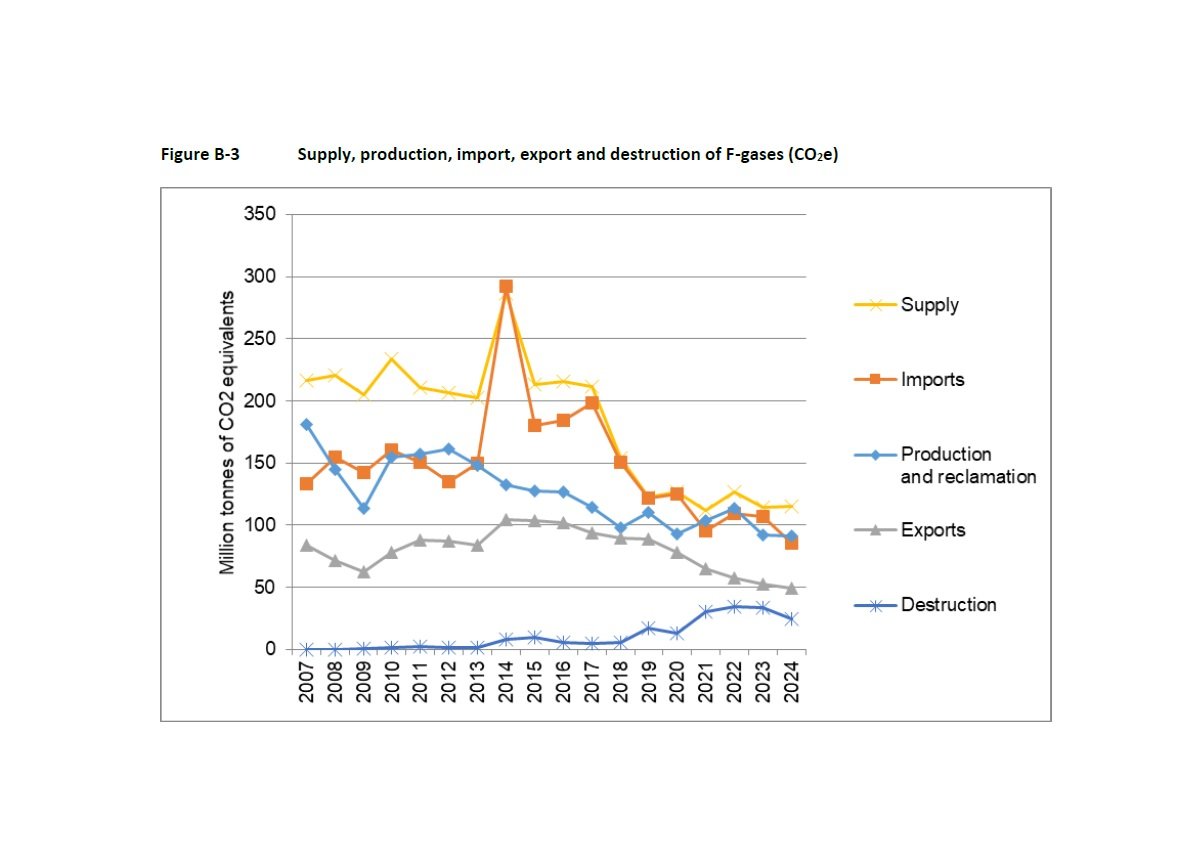The European Environment Agency (EEA) has published its
2025 report on fluorinated greenhouse gases (F-gases), summarising company-reported data from 2007 to 2024 on production, import, export, reclamation and destruction across the EU. The report confirms continued progress under the updated F-gas Regulation (EU) 2024/573, which came into force in March 2024.
In 2024, the volume of hydrofluorocarbons (HFCs) placed on the EU market decreased by 37% compared to 2023, staying 1% below the maximum quota allowed under the regulation. This reduction occurred despite the 40% cut in the quota itself, and reflects the sector’s ongoing shift to lower global warming potential (GWP) alternatives.
Overall, the EU's F-gases supply in 2024 remained at 2023 levels in CO2-equivalent terms and was approximately 45% lower than in 2015. HFCs accounted for around 51% of the total F-gases supplied (63% in metric tonnes), while sulphur hexafluoride (SF6) represented 33% in CO2-equivalent terms, but only 2% in mass.
The decline in HFC imports seen in 2023 continued into 2024, with a further 10% drop in CO2-equivalent terms, driven mainly by reduced imports of stationary RACHP systems and a shift to refrigerants with lower GWPs. Meanwhile, imports of products containing other F-gases, particularly SF6 and fluorinated anaesthetics, increased, partly due to new reporting requirements introduced by the revised regulation.
Despite a 28% decrease in the authorisation bank since 2020, the available quota authorisations still exceeded 2024 import volumes of HFC-charged equipment by more than fivefold. However, this decline suggests that quota reductions are now outpacing industry’s shift in demand.
On the global stage, the EU’s 2024 HFC consumption was 60% below the limit set under the Montreal Protocol’s Kigali Amendment, placing the EU well ahead of its international obligations.
“Refrigeration, air conditioning and heat pumps continue to be key applications for F-gases,” the report notes, “but the relevance of other sectors is increasing, particularly electrical equipment, electronics manufacture and aerosols.”
The ETC CM Report 2025/05 is based on data submitted via the EEA’s Business Data Repository and prepared with support from the European Topic Centre on Climate Change Mitigation (ETC CM), led by the Öko-Institut.


